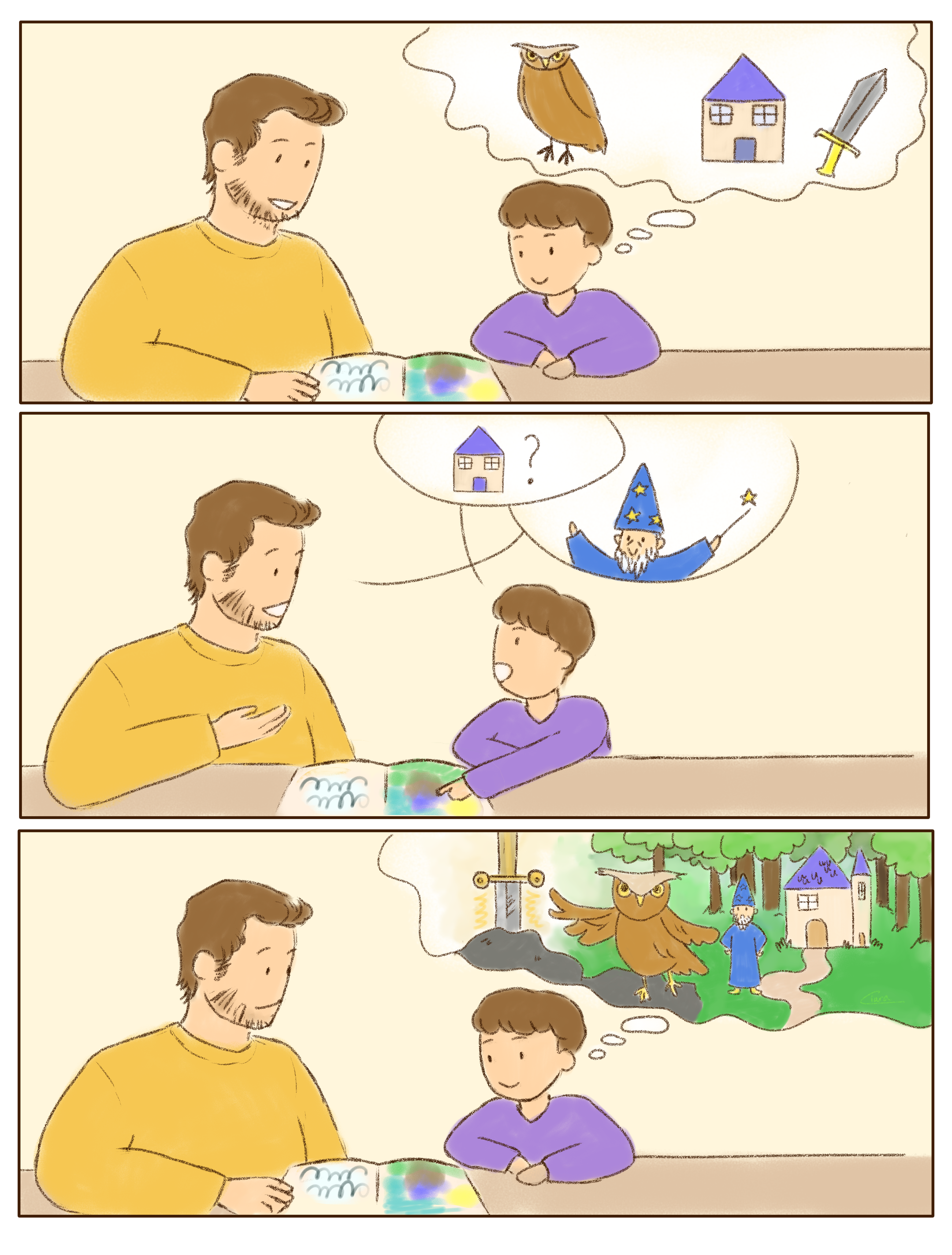How can you help a child visualize a story as they read?

Reading, at first glance, is about mapping sounds onto written characters. There are, however, other skills a reader needs, like visualization. If you read a book series before seeing the movies, you may have been surprised at how different your imagination was from the visuals in the movie. When you read a novel, you visualize the characters, settings, and action.
When children are read to, they will learn to visualize in their head, from the words they hear and any images they see in the book. They will begin to imagine characters or scenes from descriptions, and action from sequences. Then when a child begins to read on their own, they will more easily “see” what they are reading and understand it faster.
You can build your child’s visualization skills by encouraging them to draw the story they heard, or asking them questions about what places and characters are like: Was it cold when the magician went to the castle? Why was the magician wearing a hat? Over time, strengthening your child’s visualization skills will help them transition to reading fluently easier. And it will make reading more engaging and enjoyable for them.
The scientific sources of our comic:
Agosto, D. (2016). Why storytelling matters. Children and Libraries, 14(2), 21–26. https://doi.org/10.5860/cal.14n2.21
Maureen, I. Y., van der Meij, H., & de Jong, T. (2018). Supporting literacy and digital literacy development in early childhood education using storytelling activities. International Journal of Early Childhood, 50(3), 371-389.
Caldwell, H., & Moore, B. H. (1991). The art of writing: Drawing as preparation for narrative writing in the primary grades. Studies in Art Education, 32(4), 207-219. https://doi.org/10.1080/00393541.1991.11651847
